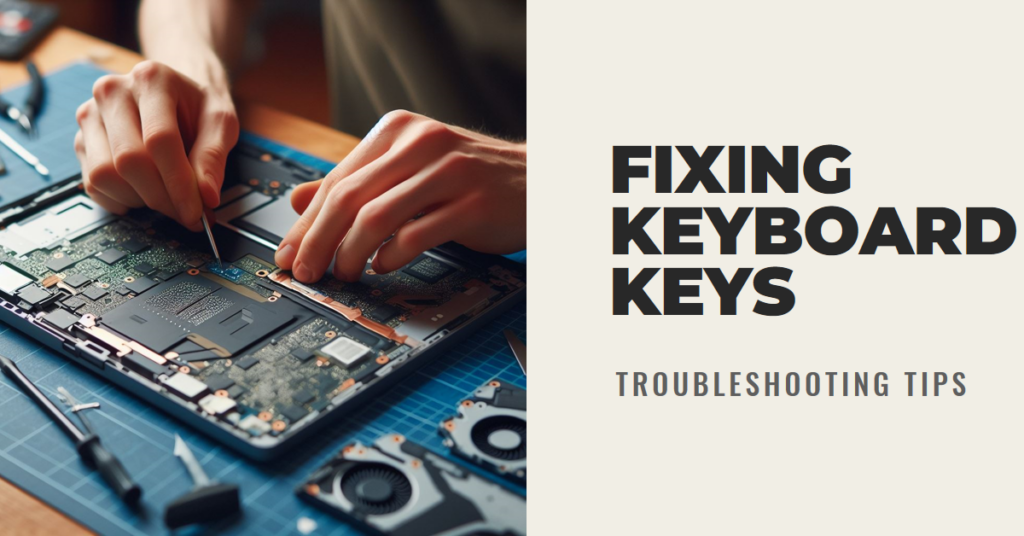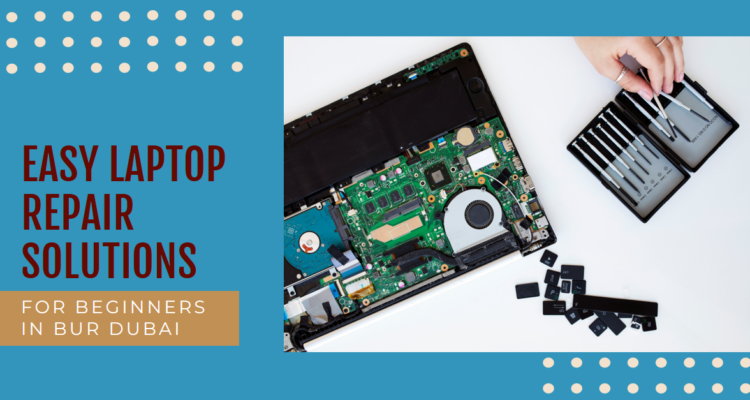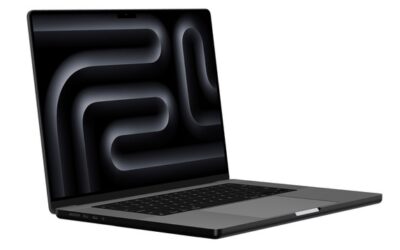Laptops are indispensable tools for both personal and professional use, enabling work, study, communication, entertainment, and more. However, these versatile devices are susceptible to a range of issues that can hamper their performance and functionality. From minor glitches to significant damage, these problems often lead to frustration, inconvenience, and potential data loss. Whether you’re a novice seeking DIY solutions or in search of expert Laptop Repair at Bur Dubai, this blog is tailored for you. Mobile Phone Repair provides comprehensive beginner-friendly guides for tackling common laptop issues in Bur Dubai, along with insights into the local repair market and compelling reasons to choose our services.
Laptop Repairing Tools and Basic Parts
Before you start repairing your laptop, you need to have the right tools and parts. These are the essential items that you will need for laptop repair:
- Screwdrivers: Use various screwdrivers like Phillips, Torx, and flathead to handle different screws during laptop maintenance. Ensure correct screwdriver size and type to prevent damage to screws or parts.
- Pliers and tweezers: To extract small or delicate parts like wires, connectors, or screws, use pliers and tweezers. Be careful not to apply too much force or you might break the part.
- Anti-static wrist strap: You will need an anti-static wrist strap to prevent static electricity from damaging the laptop components. Static electricity may accumulate on your body or clothes, potentially leading to short circuits or sparks upon contact with laptop components. To use the anti-static wrist strap, connect one end to your wrist and the other to a metal object, like the laptop case or a table leg.
- Other tools and parts: For various issues and solutions, you may require additional tools like a soldering iron, multimeter, heat gun, cotton swab, alcohol wipe, thermal paste, replacement screen, keyboard, battery, etc. You can find these tools and parts online or at a local laptop repair shop.
Before you use the tools and parts, make sure you know how to use them safely and correctly. You should also know how to identify and handle the parts properly. You need to differentiate between a hard drive and a solid-state drive, understand how to connect and disconnect them. Familiarize yourself with laptop components, including the motherboard, CPU, RAM, GPU, etc.
Here are some tips and precautions for laptop repairing:
- Back up your data: Prior to laptop repairs, back up crucial data—documents, photos, videos, etc.—using options like an external hard drive, USB flash drive, cloud service, or another storage device. This way, you can avoid losing your data in case something goes wrong during the repair process.
- Disconnect the power source: Prior to opening the laptop case, disconnect the power source, including the power cord, battery, or any other connected device. This will prevent electric shocks, fires, or damages to the laptop or yourself.
- Avoid static electricity: Above, use an anti-static wrist strap to shield laptop components from static electricity. You should also avoid touching the laptop parts with your bare hands, and use gloves or a cloth instead. Avoid working on carpeted floors, woolen blankets, or humid environments, as they can generate static electricity.
Cracked Screens to Slow Speeds: Laptop Woes Solved!
Now that you have the tools and parts ready, you can start repairing your laptop. Here are some of the most common and typical laptop repair problems that beginners might encounter, and their solutions:
- Laptop does not turn on: Several issues may cause this problem, including a faulty power supply, dead battery, loose or broken power button, or a damaged motherboard. To solve this problem, you can try the following steps:
- The power supply: can be verified by ensuring a secure connection of the power cord and confirming proper functioning of the outlet. You can test the power outlet by plugging in another device, such as a lamp or a phone charger. You can also test the power cord by using a multimeter to measure the voltage and current. If the power cord is damaged, you will need to replace it.
- Check the battery: Ensure correct and secure insertion, and confirm that the battery shows no signs of swelling or leaking. You can test the battery by removing it from the laptop and plugging in the power cord. If the laptop turns on without the battery, then the battery is faulty and you will need to replace it.
- Inspect the power button for any issues: Ensure it’s not loose or damaged and that it makes proper contact with the motherboard. To test its functionality, open the laptop case and use a screwdriver to short the two pins connecting the power button to the motherboard. If the laptop powers on with the pins shorted, the power button is faulty and requires replacement.
- Inspect the motherboard: for damage or burns, ensuring no loose or broken connections. Use a multimeter to measure voltage and current in components like CPU, RAM, and GPU. If damage is found, consider replacing the motherboard or seeking professional laptop repairLLaptop Repair In Bur Dubai

-
The screen may be blank or cracked for various reasons like a faulty display cable, broken backlight, damaged LCD panel, etc. To resolve it, attempt the following steps:
- Verify the display cable: Ensure it’s properly connected, secure, and free from pinches or cuts. Test it by gently wiggling within the laptop case. If the screen flickers or changes colour, the cable is faulty and requires replacement.
- Inspect the backlight: Ensure it’s functional and free from dimness or flickering. Test it by shining a flashlight on the screen; if the image is visible, the backlight is faulty and requires replacement.
- Check the LCD panel: Inspect the LCD panel for cracks, damage, dead pixels, or lines. Connect the laptop to an external monitor (e.g., TV or projector) to test. If the external monitor displays a normal image, the LCD panel is defective and requires replacement.
-
Keyboard keys not working? Possible causes include a faulty connector, dirty/sticky keys, or worn/broken ones. To troubleshoot, follow these steps:
- Check the keyboard connector: Ensure the keyboard connector is securely connected without any looseness or bending. Reseat the connector within the laptop case to test. If the keyboard keys remain unresponsive, replace the faulty connector.
- Check the keyboard: Inspect it for cleanliness, ensuring it’s free from dust, dirt, crumbs, liquids, or any substances that may hinder key presses. Use a compressed air can, cotton swab, alcohol wipe, or soft brush to clean it. If issues persist, consider replacing the damaged keyboard.
- Check the key: Inspect the key for wear, damage, or obstruction. Use a small tool like a screwdriver or tweezers to gently pry it off and examine the mechanism. Alternatively, employ glue, tape, or paper for minor repairs. If irreparable, consider replacing the key.
-
Battery issues, like quick drainage or failure to charge, may stem from various causes, such as a defective battery, charger, power jack, or power management system. To address this, consider the following steps:
- Check the battery: Inspect the battery for swelling, leaks, and age. Test it with a multimeter for voltage and current. Utilise software like BatteryCare or BatteryInfoView to assess health and capacity. Replace the battery if it’s defective.
- Inspect the charger: For damage or fraying; ensure compatibility with your laptop’s model and specifications. Test it using a multimeter for voltage and current, or try an alternate working charger. Replace the charger if it’s faulty.
- Inspect the power jack: For any issues: Confirm it’s neither loose nor broken and is in proper contact with the charger. Utilize a multimeter to measure voltage and current, or attempt to use a functional power jack compatible with your laptop. If it’s defective, consider replacing or soldering a new one.
- Check the power management system: Verify the power management system: Ensure it’s not corrupted or misconfigured, and not causing unnecessary battery drainage. Access BIOS, Windows settings, or manufacturer’s software to check. Update or reinstall drivers/firmware related to power management. If faulty, reset it or seek professional laptop repair.
-
Overheating or fan noise may stem from various issues like a clogged or damaged fan, a dusty heat sink, worn thermal paste, or a malfunctioning temperature sensor. To address this, consider these steps:
- Check the fan for proper operation: Ensure it spins without loud or unusual noises. Examine it by opening the laptop case or using software tools like SpeedFan or HWMonitor to check speed and noise. If clogged or broken, clean or replace it.
- Inspect the heat sink: Confirm it’s free of dust, unobstructed, and undamaged. Open the laptop case or use software tools to check temperature and performance. Clean or replace a dusty or blocked heat sink.
- Examine the thermal paste: Ensure it’s not dried or cracked, covering the CPU and GPU adequately. Open the laptop case, remove the heat sink, or use software tools for temperature and performance. Replace dried or cracked thermal paste.
- Verify the temperature sensor: Check for faults or misreadings triggering unnecessary fan activity or shutdowns. Use software tools like SpeedFan or HWMonitor to examine temperature readings and fan behaviour. Replace a faulty temperature sensor or seek professional repair.
-
Slow performance or software errors may stem from various causes like a full or fragmented hard drive, low or corrupted RAM, malware or virus infection, outdated or incompatible drivers, etc. To resolve this, consider the following steps:
- Check the hard drive for issues: Ensure it’s not full, fragmented, damaged, or corrupted. Use tools like Disk Cleanup, Disk Defragmenter, CHKDSK, or CrystalDiskInfo to assess space, health, and performance. If it’s full or fragmented, delete files or defragment. Repair or replace if damaged.
- Examine RAM: Confirm it’s not low, corrupted, loose, or incompatible. Tools like Task Manager, Memory Diagnostics Tool, or MemTest86 can help check usage, health, and performance. If RAM is low or corrupted, close programs or run a memory test. For loose or incompatible RAM, reseat or replace.
- Scan for malware or viruses: Ensure the laptop isn’t compromised. Tools like Windows Defender, Malwarebytes, or HitmanPro can help. If infected, remove the malware or virus or restore the laptop to its previous state.
- Inspect drivers: Confirm they’re not outdated, incompatible, or causing conflicts. Utilize tools like Device Manager, Driver Booster, or Driver Easy to check status, update, and performance. Update or reinstall if drivers are outdated or incompatible.
Laptop Repairing Market Analysis and Outlook in Bur Dubai
For the best laptop repair at Bur Dubai, consider key facts about the local market. Here are some:
- In Bur Dubai, over 50 laptop repair shops provide diverse services, including hardware and software repair, data recovery, screen, keyboard, and battery replacement. Notable options include Mobile Phone Repair, Laptop Repair Dubai and Computer Care.
- In Bur Dubai, laptop repair costs vary, with an average ranging from AED 100* to AED 1000*, based on specific issues and solutions. Repair durations also fluctuate between 30 minutes and 3 days, influenced by availability and complexity. Factors impacting cost and duration include laptop model, specifications, warranty, insurance, repair shop, service, and tools.
- In Bur Dubai, laptop repairing providers receive high customer satisfaction and positive feedback, suggesting contentment with service quality and efficiency. Sources like Google Reviews, Trustpilot, Facebook, and Yelp contribute to these ratings.
-
Comparing laptop repair options in Bur Dubai to others, our research reveals both advantages and disadvantages. The benefits include:
- Laptop repair at Bur Dubai is both fast and convenient, thanks to centrally located shops offering same-day or next-day service. The services are affordable and competitive, featuring transparent pricing, discounts, and coupons for loyal customers. The repair is reliable and professional with experienced technicians using high-quality tools and genuine parts. Safety and security are ensured through strict confidentiality policies, guaranteeing the privacy of both the laptop and its data. The service is marked by friendly and courteous staff delivering excellent customer support.
Choosing Laptop Repair at Bur Dubai has drawbacks. Firstly, availability issues may arise, with some shops lacking tools or parts for specific laptop models or problems. They could also be closed or busy at certain times. Secondly, the quality of repair may be compromised due to the shops lacking skills or knowledge for certain laptop issues, potentially leading to mistakes during the repair process. Lastly, there’s a risk of fraud or dishonesty, as shops might impose hidden fees or use inferior tools and parts.
Conclusion
we have provided you with step-by-step laptop repair solutions for beginners in Bur Dubai. We’ve provided information on the laptop repair market in Bur Dubai, including facts and figures. Choose us as your repair provider for reliable service.
We hope you have found this blog post useful and informative. If you have any questions or feedback, please feel free to contact us or leave a comment below. We would love to hear from you and help you with your laptop repairing needs.
Thank you for your time. We hope to see you soon at Mobile Phone Repair, the top laptop repair service in Bur Dubai




